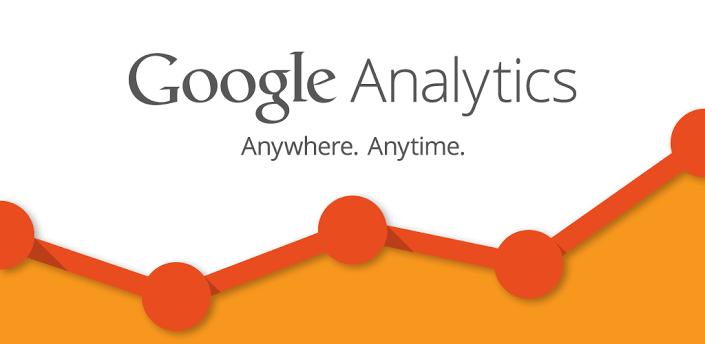Given the fact that WordPress is now one of the best Content Management Systems available, it’s no strange that statistics about its usage are getting more shocking every day.
When Tom Ewer decided to do some research on it back in 2014, 74.6 million sites were recorded as depending on WordPress, 37 million monthly searches were WordPress-related, 6 new WordPress.com posts were made every second. Astonishing, isn’t it? As WordPress is expanding itself at the greatest pace ever, more and more users have come and chosen WordPress as a trusted platform for their websites.
If you’re one of those who are new to WordPress, you’re at the right place! If you’ve already worked with this marvelous system for a while, let me tell you, there are still plentiful lessons to be learned! That is pretty much why I’m here, writing down the “Do’s and Don’ts When Using WordPress” I’ve been gathered throughout my years of working with WordPress.
The 7 Do’s include:
- Create a New Database User for the WordPress Database
- Install Google Analytics Immediately
- Use a Responsive Design
- Use Social Medias for Promoting Purposes
- Create a Long and Strong Password
- Have a Backup Plugin
- Use Videos and Pictures
Meanwhile, the 7 Don’ts are:
- Purchase Bad Hosting
- Use Copyrighted Data
- Have Too Many Categories
- Use All The Default Widgets
- Create Your Content from Text Editing Software
- Capitalize All When Writing
- Forget to Change the Default Title and Tagline
These are all basic things you should remember. For the interesting details on each ‘how and why’, please keep on reading!
When using WordPress, Do:
1. Create a New Database User for the WordPress Database
As you may already know, WordPress demands a database to be established in order for you to save your posts and other types of content. More importantly, the database can only be accessed by a database user and password. Therefore, if you use the database user for other purposes in other situations and need to change the password, your WordPress site, sadly, will be very likely to break. Not very happy to be in that situation right?
The golden rule here is, don’t ever reuse an existing database user for the WordPress database! Create a new one, it won’t take much time.
2. Install Google Analytics Immediately

It would be a mistake not to keep track of your website’s performance. Since the dawn of your website, you should start paying attention to such types of data as who are visiting your site, where they come from, what they do with your website, how long an average person spend on a specific page, whether they return or never come back, etc. All these questions can be answered effectively by Google Analytics.
Installing Google Analytics and collecting these kinds of information will help you make the right decisions as what to do with your website. Once you’re successful in doing so, your website will definitely rule!
3. Use a Responsive Design
This tactic is even recommended by Google!
Why is that? Well, because a responsive design would allow your website to be reorganized and resized based on whatever device it is being viewed from. By “whatever device”, I mean any handheld devices apart from laptops and PCs, for example: tablets and mobile phones. You surely don’t want your beloved website to look not-so-good, do you? While a stunning website will do a good job of attracting visitors, an opposite one would heavily affect the traffic it gets. For example, obviously, no mobile user wants to visit a website that cannot adjust itself to his/her phone.
You don’t have to worry so much about this because, at the moment, almost all themes are designed to be responsive. Just remember to be careful when selecting!
4. Use Social Media for Promoting Purposes

I believe that we all know and value the importance of social media. They are ultimately helpful in making your website well-known by the Internet users, especially those like Facebook, Twitter, Instagram, and Tumblr. If you make videos, YouTube, Vimeo and Vine would be useful too. Thus, you should totally create accounts for your business in these giant social media platforms and make use of them to promote your website and articles. This measure can help increase traffic to your website when search engines index it as well!
Take my website as an example: Besides other approaches, a very large number of visitors come to my website via social medias, more like a half! Imagine how many visitors I have lost without these social medias? Well, not a very happy scene to imagine, really!
5. Create a Long and Strong Password

Let’s put this the other way round! What if you have a short and weak password? Well, once hackers (or simply someone who is witted enough) figure out the username of yours, they will trace the password in no time. Therefore, the only way to protect your website from being accessed by someone you absolutely do not grant the rights to is to have a long a strong password.
Make it something that cannot be guessed, with a combination of letters, numbers and special characters!
6. Have a Backup Plugin
What will happen when you don’t have a backup plugin? Well, if bad luck comes around and your website suddenly crashes, you will have absolutely nothing left. Everything will be gone in a blink of an eye. What is even worse is that website crashes happen more frequently than you think! It may result from simple mistakes or traffic overload or server malfunction. Whatever the cause could be, when they crash, website owners will be left with nothing.
So what is the lesson here? Yes, be prepared for the disaster before it happens: backup your website! If you’re wondering which plugins to use, here are my recommendations: BackupBuddy, BackUpWordPress or VaultPress!
7. Use Videos and Pictures

Even if you write really well about hot issues that many people love to read about, truth is, they won’t stay for long if they’re just plain texts! In fact, many people find videos and pictures more appealing and informative than text. So, in order to keep your visitors and to draw the attention of the new ones, you’d better have videos and pictures in your websites.
However, as too much of anything can make us sick, videos and pictures should only be regarded as tools to accompany your articles. Don’t let them take up too much space on your website.
At the same time, remember Don’t:
1. Purchase Bad Hosting
What is bad hosting? It’s pretty much the cheap hosting from wrong companies. Well, I’m not saying that all the cheap hostings are bad, but the truth is that you shouldn’t buy hosting service from companies which are not specialized. For example, there are some brands that are famous for selling domain names, and not good at all when it comes to hosting service! Some common problems can be involved with server time-out rate or even the cancellation process!
Based on my experience, some good hosting services are SiteGround, HostGator and BlueHost.
2. Use Copyrighted Data
And I don’t mean written text only! Anything that is protected by the copyright laws such as text, videos and pictures is not allowed to be used illegally, which means without the permission and the credit to the original creator or author. If you disregard this rule, troubles for yourself or the company you’re working for are likely. It can even lead to Lawsuits.
Usually, if you want to utilize a piece of copyrighted material, you only need a simple photo credit or link back to the original work. However, if this is not stated clearly, the best option is not to use it.
3. Have Too Many Categories

Like I’ve already said above, “too much of anything can make us sick”, the same goes with “too many”! If your website has too many categories, visitors are likely to be made dizzy by them! The situation is much worse if your categories are too similar.
After constructing your website, check again and make sure that there are only the necessary categories, the others can be changed into tags.
4. Use All The Default Widgets
Let’s be realistic here! No one uses all the default widgets they leave on your website. In fact, a very few out of them would be utilized in the future. Leaving the unused widgets on your website unnecessary and they may get in the way of your work. Thus, many people just get rid of them. How?
One easy way would be to “unregister” a widget in your functions file, and done. It won’t appear on your widgets page again.
5. Create Your Content from Text Editing Software
It is not very wise to create content from any text editing software (such as Microsoft Word) and then paste it into the WordPress Visual Editor if you are not forced to do so. First, it would be time-consuming as you will have to edit and change to match with your page. Second, there is a “Draft” section in your website that you could utilize.
Why bother creating it somewhere and then paste into the Editor when it’s done while you can totally create it directly on the website and save for future editing?
6. Capitalize All When Writing
Don’t abuse capitalized letters! The capitalization rules are easy to remember. There is more than one rule, but may I remind you of the most vital one, that is, the use of capitalization in titles. When writing titles, remember to capitalize such components as nouns, verbs, adjectives, adverbs, pronouns and subordinating conjunctions (because, since, as, etc.), and don’t capitalize articles (a, an, the), coordinating conjunctions (and, but, or, etc.) and prepositions (on, in, at, etc.).
And oh! Don’t ever use capitalized letters for URLs as it might hurt your traffic very badly!
7. Forget to Change the Default Title and Tagline

Although they may not be shown in your theme, the website title and tagline are likely to appear in search results and other parts of your website. It doesn’t harm much really, if not consider the fact that it makes your website look super unprofessional!
Therefore, whatever you do, remember to change the default title and tagline before taking any step further with your website.

